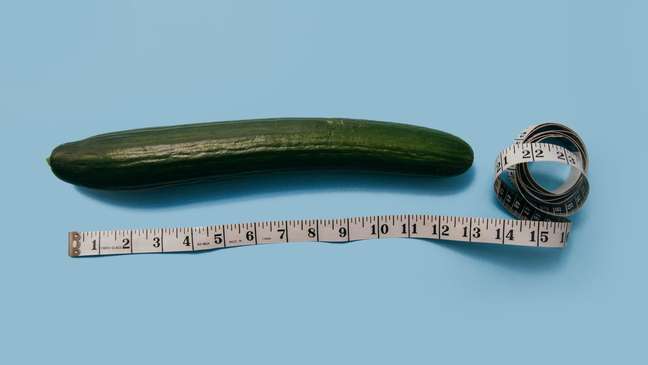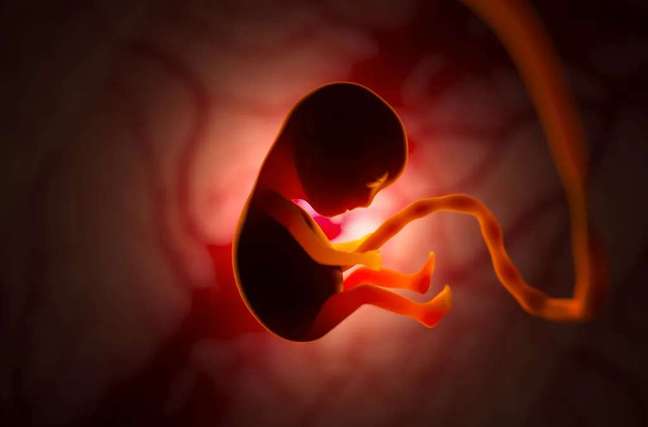Affecting 0.6% of men, micropenis can lead to lower-than-normal self-esteem and fertility issues. What is the minimum size to classify the organ in this way?

Micropenis is the name given to the condition characterized by a much smaller than average size male genital organ, usually diagnosed at birth, but also with cases found only in adult life. Although smaller, the functions of the penis are not usually dysfunctional, retaining its general appearance, function and structures, but still being able to perform less fertility.
But what is the minimum size to enter the ranking? There is some controversy in the literature, as different polls take different averages, but considering more comprehensive studies, such as the 2014 one in the journal Sexual medicinalwhich included 15,000 men between the ages of 17 and 91 -, the average penis is 13.24 cm, erect: since micropenis is defined as 2.5 standard deviations below normal, this would be 9.32 cm or less. Other studies consider 4 cm flaccid and 7.5 cm erect.

diagnosis of micropenis
For the identification and treatment of micropenis to be effective, the ideal is to verify its presence when the individual is still a child. In this case, the average size is between 2.8cm and 4.2cm, so a micropenis would be less than 1.9cm. If the penis is between 1.9 cm and 2.8 cm at the age of 9, the size is considered to be below average, but it would not be a micropenis.
Between the ages of 9 and 10, the average size is 6.3cm, leading to a measurement of 3.8cm or less for it to be considered a micropenis. Any measurement between the two is below average, but it is not abnormal. For measurement, the method is to gently stretch the organ and measure its length from tip to base, as close to the body as possible.
Micropenis is a rare event, affecting 0.6% of men worldwide, i.e. it occurs in 3 out of 20,000 births. One condition that can be confused with this is that of the embedded penis, when children or preteens have an unusually oily pubic area, which “hides” the organ in the folds of the skin.
This can also happen when the scrotum is taller than normal and the “hidden” aspect of the penis makes it seem too small. The condition can be resolved with surgery or a change in habits, as it is often associated with obesity. In older men, the weakening of the pelvic muscles can also cause the penis to recede into the pubis.

Treatments for micropenis
To treat the condition, the ideal is for the surgery to take place as soon as possible, as the hormones used are most effective in childhood. Treatment can help with self-esteem and self-confidence in adulthood and increase the chances of having a more satisfying sex life, as micropenis is a source of great concern and paranoia for many men.
Stimulation of penis growth is performed with the application of testosterone, controlling the response of the organ. The hormone can be applied via injections, gels or topical solutions directly to the penis. Although it is effective in childhood, there is less evidence that testosterone injection is effective during puberty or adulthood.
Another option is phalloplasty, a penile plastic surgery more common in teens and adults performed when hormone treatment is not effective. The most common surgery is to cut the suspensory ligament, which stretches the penis up to 2cm in a flaccid state, improving its appearance, but not affecting the size of the erect organ. Prostheses with penile pumps or extenders can also be installed.
There are, however, risks associated with such procedures, such as urinary tract complications and erectile dysfunction, among other problems. In dissecting the suspensory ligament, for example, the natural elevation of the penis can be lost in the erect state. Some doctors believe that the increase in size does not outweigh the risks associated with surgery.

acceptance of the body
Part of what makes micropenis a real problem is cultural issues: in media reproductions and social mores, penis size is overly associated with manhood and masculinity, which leads men to believe that they can only give pleasure in relationships. heterosexuals, if they have a large penis.
According to studies, the average size of an excited vagina is 10 cm, reaching 14 cm during penetration, but it must be taken into account that the most sensitive area of the female sexual organ is the external one, where the clitoris and the Grafenberg Point (Point G), although the latter concept is disputed in science.
Many women also reach orgasm only through clitoral stimulation, and penises that are too large are considered uncomfortable, as they can compress the cervix. The circumference would be more important than the length, in this case: according to the studies, the average circumference of the penis is between 9.3 cm when flaccid and 11.6 when erect.
According to urologists, most patients who seek professionals with penis size complaints end up being instructed not to perform any procedures, but to seek counseling. Pleasure in relationships is more related to foreplay and intimacy at the time of sex, and it is more important to get rid of misconceptions and stereotypes than to seek alleged corrections to problems that, in fact, do not exist.
Source: Terra
Benjamin Smith is a fashion journalist and author at Gossipify, known for his coverage of the latest fashion trends and industry insights. He writes about clothing, shoes, accessories, and runway shows, providing in-depth analysis and unique perspectives. He’s respected for his ability to spot emerging designers and trends, and for providing practical fashion advice to readers.








